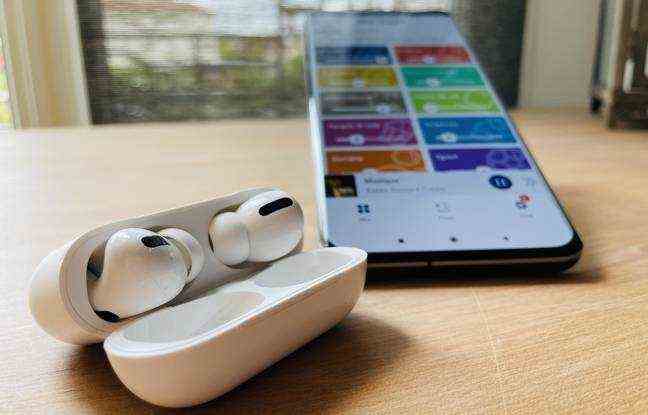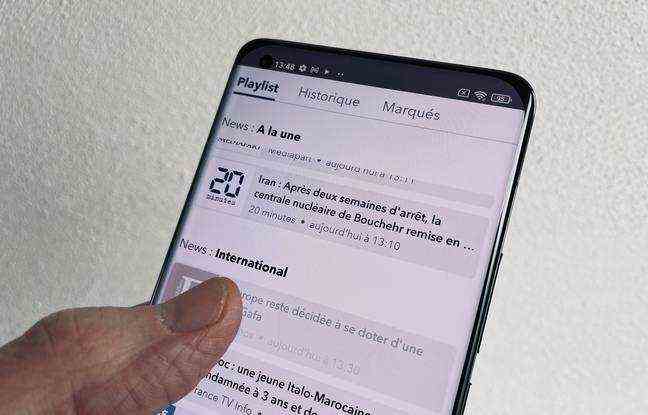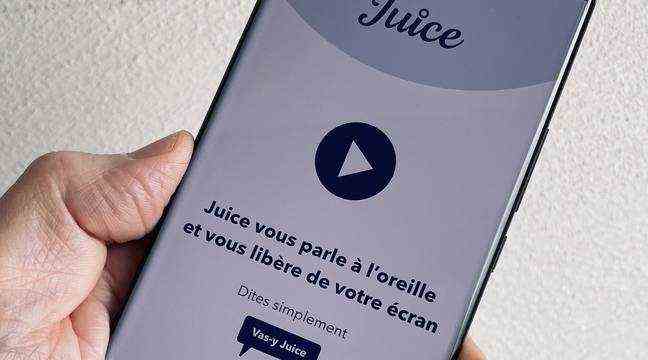One app, 21 virtual presenters, news, articles, podcasts and streaming music: with the app
Juice, the audio world is undergoing a real makeover. By “pushing” into our headphones or headphones content that everyone can dose according to different themes, Juice offers a unique experience. Founded by Rafi Haladjian, the father of connected objects to whom we owe the rabbit Nabaztag, with Stéphane Dadian and Arié Selinger (two young techno enthusiasts), Juice turns on radio 3.0, a radio that each listener can make unique. 20 minutes met Rafi Haladjian and Stéphane Dadian.
What can we do with Juice?
Stéphane Dadian: The first thing to do with the application is to press Play or say “Go ahead, Juice”. From then on, Juice unrolls an audio stream in a personalized way. That is to say all your favorite audio contents: news, music, but also the weather forecast, the time … If you don’t like it, you can decide to zap, to delete this or that topic, to dose it. Everything that is written, like a newspaper article, is read in a synthetic voice.
Rafi Haladjian: The principle behind Juice is that it is a proactive application. The algorithm builds everything to make the experience pleasant. But we can always interact with it since it is a dynamic flow, skip a subject, move forward… On the other hand, we can ask for the development of a subject, pin one to listen to it later…
How does Juice work?
SD: Like a mixer. There are 11 families of subjects. This is only free and public content from serious media, including 20 minutes. When to podcasts, they last less than 10 minutes.
RH: When you listen to the radio, you always listen to the same stations and shows. There, we will really discover new things. The idea is not to make a player of podcasts Furthermore. There is only for the music that one does not make discover anything because Juice only plays things that you like, resulting from your playlists.
How did the idea for Juice come about?
RH: One evening in May 2017, I had dinner with a friend who revealed to me that he was wearing a hearing aid. It was my ” Hara moment “, a revelation ! This almost invisible device allowed him to both hear surrounding noises and amplified sounds, with a battery life of about 16 hours. The idea arose of doing something that was originally called Jiminy Cricket. Or the fact of having something on “my shoulder” that constantly whispers in my ear what I need to know, contextual information.
Like augmented reality in audio?
RH: At the time, we were still talking about Google Glass, this idea of having information that I superimpose on the experience I am going through. I told myself that we were on the wrong track with these glasses and that with reliable audio technology, with social acceptability, we could imagine something else.

The arrival of Apple’s AirPods has reinforced this feeling. From then on, this concept of Jiminy Cricket was in line with what I had done with Nabaztag which conveyed information other than through a screen.
What is your business model?
SD: We’re going to advertise, but not like on the radio. We have synthetic voices that we can make everything read dynamically. While they present this or that subject, we will be able to make them read ads, but rather like an influencer who places a product.
RH: We are targeting 35,000 downloads in France within 6 months. This is a point beyond which we can start charging for certain things. The base model will remain free with ads.

There will be subscriptions premium without advertising and we think about accounts ” premium-premium “Where we can choose very” niche “topics for which we will do the day before.
But you are going to pay yourself with content that you did not produce …
RH: We use content that exists elsewhere for free. A podcast which is free on Apple Music or Spotify, there is no reason that we pay it to use it with us. Especially since we give it to discover, while in others we have to go and look for it.
Your synthetic voices are particularly convincing, almost natural …
RH: For a synthetic voice to become pleasant, it must be improved, taught to speak, that it does not make pronunciation mistakes, that it does not scratch names. And then there’s the vocal design around it. We realized that when we applied a background sound to a synthetic voice, like the noise of a station hall, we had less the impression that it was a synthetic voice. It creates flesh around the voice.
SD: We thus have 21 speakers, virtual influencers, but with all the work of demystifying what is technological. These “people” have names, personalities, characters and we live with them, otherwise we would not support them. There is also the way of writing which intervenes. Humor is important. We have the craziest weather man in the world, he’s not sure what he’s saying!
No relationship, therefore, with personal assistants on connected speakers?
RH: We wanted to do the opposite of personal assistants who wait all day for things to be asked of them, when we don’t know what to ask them. All the technology and know-how developed since web 2.0, that is to say since 2003, is not available in audio. Why these 15 years of lag?

Juice’s idea is therefore to reinvent audio. The feeling we had was that it had stuck to the Walkman age: pre-recorded content is put in a box, I slip it into my player and listen to it. It’s no different from the tape, except that it’s dematerialized. Even the podcast is still cold meat.

